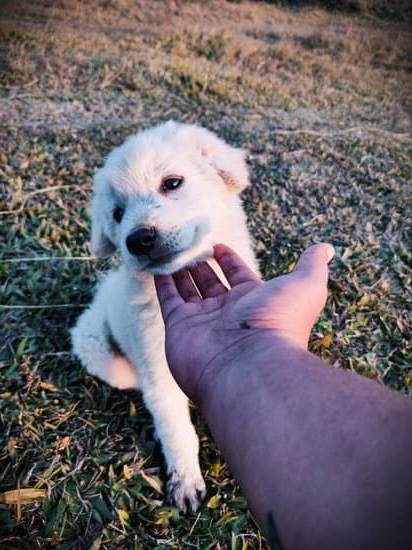Walking your dog is an essential part of their daily routine, providing exercise, mental stimulation, and the opportunity to explore their surroundings. However, it can quickly become a frustrating experience if your dog constantly pulls on the leash, making the walk uncomfortable and sometimes even dangerous.
To ensure enjoyable and stress-free walks with your furry companion, it is crucial to train them not to pull while walking. In this article, we will guide you through steps and techniques to help you achieve proper leash behavior and establish a strong connection with your dog.
Proper leash behavior is vital for several reasons. Firstly, it ensures the safety of both you and your dog. When a dog pulls excessively on the leash, they can easily catch you off-balance or drag you into a potentially hazardous situation.
Secondly, teaching your dog not to pull promotes relaxation during walks. Dogs that constantly strain against the leash are often anxious or excited, which can make it challenging for them to focus on their surroundings or interact calmly with other dogs or people. Lastly, loose leash walking strengthens the bond between you and your canine companion by fostering trust and communication.
Understanding why dogs pull during walks is an important first step towards effective training. There are various reasons for this behavior that range from natural instincts to lack of obedience training or frustration. Some dogs may simply have a strong prey drive or an inclination to explore new scents and sights eagerly.
Other dogs may be motivated by excitement or fear of missing out on something interesting in their environment. By identifying these underlying causes, you can tailor your training approach accordingly and better tackle specific challenges that arise in leash training.
In the following sections of this article, we will provide you with a comprehensive guide on how to successfully train your dog not to pull while walking. We will cover everything from selecting appropriate equipment and collars for leash training to establishing positive reinforcement techniques and addressing particular difficulties that may arise during the process. So let’s dive into the world of leash training and help you achieve those stress-free, enjoyable walks with your well-behaved dog.
Common Reasons Why Dogs Pull During Walks
One of the most frustrating behaviors for dog owners while walking their pets is pulling on the leash. This is a common issue that many dogs exhibit, and understanding the reasons why dogs pull during walks can help in addressing and effectively training this behavior.
A primary reason why dogs pull on the leash is due to excitement or overstimulation. Dogs are naturally curious creatures, and the sights, sounds, and smells of the outside world can be overwhelming for them. This excitement leads to pulling as they try to explore their surroundings at a faster pace. Additionally, some dogs may have a strong prey drive, causing them to lunge or pull when they see small animals or interesting scents.
Another common reason why dogs pull during walks is lack of proper training and reinforcement. Dogs aren’t born with an innate knowledge of how to walk politely on a leash; it’s a skill that needs to be taught and reinforced consistently.
If a dog hasn’t received proper leash training or has not been taught basic obedience commands such as “heel” or “leave it,” they may resort to pulling out of habit or because they haven’t learned another way.
In some cases, dogs may also pull on the leash due to fear or anxiety. Certain environments or stimuli can trigger anxiety in dogs, causing them to seek distance from whatever is causing them distress. This fear-based pulling is often accompanied by other fearful behaviors such as cowering, panting heavily, or trying to retreat.
Understanding these common reasons why dogs pull during walks is essential for effective leash training. By recognizing whether your dog is pulling out of excitement, lack of training, or fear/anxiety, you can tailor your approach accordingly and address the root cause through appropriate training techniques and positive reinforcement methods.
Step 1
The Importance of Choosing the Right Equipment
When it comes to leash training your dog, selecting the appropriate equipment is crucial. The right equipment can make a significant difference in your dog’s behavior and comfort during walks. There are a variety of options available, but it’s important to choose what works best for you and your dog’s specific needs.
One common choice is a standard flat collar, which is simple and easy to use. However, if your dog tends to pull or has neck issues, a harness might be a better option. A harness distributes the pressure across your dog’s chest and shoulders instead of their neck, reducing the risk of injury. Additionally, some dogs benefit from head collars or anti-pull harnesses that help discourage pulling behavior.
Understanding Different Types of Collars
There are several types of collars available for leash training, each with its own benefits and considerations.
- Flat collar: This is the most basic type of collar, made from nylon or leather. It provides a place to attach identification tags but does not provide much control if your dog pulls.
- Martingale collar: Also known as a limited slip collar, this type of collar has an additional loop that tightens when your dog pulls but releases when there is no tension on the leash.
- Slip collar or choke chain: This type of collar should only be used under the guidance of a professional trainer as it can cause injury if used improperly.
- Prong or pinch collar: Similar to the slip collar, this type uses prongs/pins to create discomfort when your dog pulls. It should also be used under professional guidance.
- Head halter: This type fits over your dog’s nose and provides control by controlling their head movements.
Remember that choosing the right equipment is just one aspect of successful leash training. Combine it with positive reinforcement techniques and consistent practice for optimal results.
Step 2
Establishing positive reinforcement and rewards is a crucial step in training your dog not to pull while walking. Dogs respond best to positive reinforcement, which involves rewarding them for exhibiting the desired behavior. This section will provide guidance on how to establish positive reinforcement and use rewards effectively in leash training.
One of the most effective ways to establish positive reinforcement is through the use of treats. Choose small, soft treats that your dog can consume quickly and easily while walking. When your dog walks calmly by your side without pulling, praise them enthusiastically and immediately give them a treat. This helps them associate the desired behavior with a reward, encouraging them to repeat it.
In addition to treats, you can also incorporate verbal praise and petting as rewards for good behavior. Use an upbeat tone of voice and lavish your dog with affection when they walk without pulling. Positive physical contact reinforces the bond between you and your dog and makes the training experience more enjoyable for both of you.
It’s important to note that timing is crucial when using positive reinforcement. The reward should be given immediately after your dog exhibits the desired behavior, so they associate it directly with their action. Delayed rewards may confuse them and make it harder for them to understand what they are being rewarded for.
By establishing positive reinforcement through treats, verbal praise, and petting, you can create a rewarding experience for your dog during leash training. This will motivate them to continue behaving well while walking on a leash and set the foundation for successful training moving forward.
Step 3
Once you have chosen the right equipment and collar, and established positive reinforcement and rewards for good behavior, it is time to start teaching your dog the basic training exercises to achieve loose leash walking. This step is crucial in helping your dog understand what is expected of them during walks and to develop the necessary skills for proper leash behavior.
Exercise 1: Focus on Attention
One of the fundamental exercises in teaching loose leash walking is getting your dog to pay attention to you while on the walk. Start by standing still and waiting for your dog to look at you. As soon as they do, say “Yes.” or use a clicker, and reward them with a treat. Repeat this exercise several times each day until your dog consistently looks at you when prompted.
After your dog has mastered focusing on you while stationary, you can start practicing attention exercises while walking. Begin by taking a few steps forward, making sure to keep treats ready in your hand or treat pouch. Every few steps, say your dog’s name followed by “Look” or “Watch me.”
When they make eye contact with you, reward them promptly. Gradually increase the duration between rewards so that they learn to maintain focus on you during longer stretches of walking.
Exercise 2: The Reverse Walk
Another effective exercise for teaching loose leash walking is the reverse walk. Start by taking a step backward and encouraging your dog to follow you by using verbal cues like “Let’s go” or gentle leash pressure. When they catch up with you and the leash remains loose, reward them with praise and a treat.
Continue practicing this exercise in different directions and environments. As your dog becomes more proficient at following you without pulling or tension on the leash, gradually increase the distance covered before rewarding them. Remember to always use positive reinforcement whenever they successfully maintain a loose leash during the reverse walk.
Exercise 3: The Stop and Sit Technique
Teaching your dog the “stop and sit” technique can be highly beneficial in preventing them from pulling during walks. Every time your dog begins to pull ahead, stop walking immediately and stand still. Say “Stop” or use a verbal cue of your choice, and then ask your dog to sit. As soon as they comply, reward them with a treat and resume walking.
Consistency is key in reinforcing this behavior. Make sure to reward your dog every time they stop pulling and sit calmly. Over time, they will associate pulling with coming to a halt, making loose leash walking more rewarding for both of you.
By implementing these basic training exercises into your daily walks, you are laying the foundation for teaching your dog proper leash behavior. Remember to be patient and consistent with their training as it may take time for them to fully grasp these concepts. In the next section, we will address specific challenges that may arise during the process and provide troubleshooting strategies to overcome them.
Step 4
When it comes to leash training, every dog is unique and may present specific challenges that require additional attention. In this step, we will address some common issues that dog owners may encounter while teaching their furry friends how to walk politely on a leash.
- Pulling towards distractions: Many dogs are easily distracted by the sights, sounds, and smells around them while on walks. This can result in pulling behavior as they try to reach interesting stimuli. To address this challenge, you can implement a “look at me” command during walks.
This involves using a treat or toy as a lure to get your dog’s attention and rewarding them when they make eye contact with you. Gradually increase the level of distractions as your dog becomes more proficient in redirecting their focus back to you. - Reactivity towards other dogs or people: Some dogs display reactive behavior when they encounter other dogs or people while walking on a leash. This can include barking, lunging, or growling. It is important to address this issue early on to ensure the safety of both your dog and others around you.
One effective technique is desensitization and counterconditioning. With the help of a professional trainer if needed, gradually expose your dog to these triggers at a distance where they remain calm and reward them for calm behavior. Over time, decrease the distance between your dog and the trigger while ensuring they stay relaxed. - Pulling towards squirrels or wildlife: Dogs have a natural prey drive and may become highly excited when they spot squirrels, rabbits, or other wildlife during walks. To overcome this challenge, consider incorporating impulse control exercises into your training routine.
Teach your dog commands like “leave it” or “stay” which can be used when they become fixated on something stimulating. Consistent practice of these exercises will gradually teach your dog to exercise self-control and resist the urge to pull towards wildlife.
Addressing specific challenges during leash training is crucial to ensure that your dog develops good walking manners. By implementing these strategies, you can help your furry friend overcome distractions, reactivity, and prey drive, ultimately achieving a stress-free and enjoyable walking experience for both of you. Remember to be patient and consistent in your training efforts, as it may take time for your dog to fully master these skills.
Maintaining Consistency and Reinforcing Good Behavior
Consistency is key when it comes to training your dog not to pull while walking. Dogs thrive on routines and clear boundaries, so it’s important to consistently reinforce good behavior to ensure long-term success. Here are some tips on maintaining consistency and reinforcing good behavior during leash training:
- Use consistent commands: When teaching your dog to walk without pulling, choose a specific command or cue that you will use consistently. For example, you can say “heel” or “walk nicely” every time you want your dog to walk by your side without pulling. Make sure everyone in the household uses the same command so that your dog understands what is expected of them.
- Be consistent with rewards: Positive reinforcement is a powerful tool in dog training. Whenever your dog walks nicely on a loose leash, reward them with treats, praise, or playtime. Consistently rewarding good behavior sends a clear message to your dog that they are doing something right.
- Avoid reinforcing bad habits: It’s just as important to be consistent in not rewarding undesired behaviors. If your dog starts pulling on the leash, avoid giving them attention or allowing them to move forward until they relax and return to a loose leash position. Consistently withholding rewards for pulling will help discourage this unwanted behavior over time.
+ Tips for maintaining consistency:
- Create a daily training schedule and stick to it.
- Be patient and persistent with your training efforts.
- Use clear body language and cues when walking with your dog.
- Practice in different environments to generalize their leash skills.
Remember that reinforcing good behavior should be an ongoing process throughout the lifetime of your dog. Even after they have mastered loose leash walking, continue providing positive reinforcement periodically as a reminder of their good behavior.
By maintaining consistency in your training approach and consistently reinforcing good behavior, you can help solidify your dog’s understanding of how to walk politely on a leash. The more you practice and reinforce the desired behavior, the better your dog will become at walking without pulling, ultimately leading to stress-free walks for both you and your furry friend.
Incorporating Distraction Training Techniques to Master Leash Behavior
One of the key challenges in leash training is teaching your dog to remain focused and obedient even when distractions are present. Incorporating distraction training techniques into your leash behavior training can help your dog stay calm and well-behaved, regardless of what’s happening around them.
To start incorporating distraction training techniques, it’s important to begin in a controlled environment with few distractions. Gradually introduce more distractions as your dog becomes more comfortable and responsive. Start by choosing a quiet area for your training sessions where you have control over the level of distractions.
Begin with basic commands such as “sit” or “stay” while gradually introducing mild distractions like toys or food treats. Provide rewards and positive reinforcement when your dog responds correctly without getting distracted. As they become more confident and reliable in their responses, you can increase the level of distractions by introducing other dogs or people walking nearby.
Another effective technique is desensitization, which involves exposing your dog to various noises, sights, and situations that might typically cause them to pull on the leash. For example, if your dog tends to become overly excited when seeing other dogs during walks, you can practice controlled encounters by having a friend bring their calm and well-behaved dog for a walk together. Gradually decrease the distance between the two dogs while rewarding your own dog for maintaining good leash behavior.
It’s important to note that consistency is key when using distraction training techniques. Make sure to practice regularly and consistently reinforce good behavior with rewards and praise. Over time, as your dog becomes more proficient at resisting distractions, you can increase the difficulty level by adding new challenges or increasing the intensity of existing ones.
By incorporating distraction training techniques into your leash behavior training, you’ll be well on your way to mastering proper leash behavior with your furry companion. Consistency, patience, and positive reinforcement will lead to a well-behaved dog who can confidently navigate various distractions while walking on a leash.
Advanced Tips and Techniques to Improve Leash Skills
Once your dog has mastered the basic training exercises for loose leash walking, you can start incorporating advanced tips and techniques to further improve their leash skills. Here are some additional strategies that can help take your dog’s leash behavior to the next level:
- Use Different Walking Routines: Varying your walking routines can help keep your dog engaged and focused during walks. This can include changing the route, exploring different terrains, or even incorporating specific commands or tasks into the walk. By providing mental stimulation and variety, you can prevent boredom and encourage your dog to stay attentive to their leash behavior.
- Introduce Challenges Gradually: As your dog becomes more adept at walking on a loose leash, you can gradually introduce new challenges to test their skills. This could involve walking in busier areas with more distractions or increasing the duration of walks. The key is to make sure that each new challenge is introduced gradually and that your dog is able to handle it without becoming overwhelmed or reverting back to pulling.
- Work on Off-Leash Training: Once your dog has mastered loose leash walking on a regular leash, you may want to consider off-leash training in controlled environments such as fenced-in yards or designated off-leash areas. Off-leash training allows your dog more freedom while still maintaining control and consistent behavior. It also provides an opportunity for them to practice self-control and recall commands in a more challenging setting.
| Tips | Techniques |
|---|---|
| Vary walking routines | Introducing mental stimulation and variety can keep dogs engaged during walks. |
| Gradually introduce challenges | Testing skills in busier areas or longer walks can improve leash behavior. |
| Work on off-leash training | Controlled practice in safe environments helps reinforce consistent behavior. |
Conclusion
In conclusion, training your dog not to pull while walking is not an easy task, but it is definitely worth the effort. By following the steps outlined in this article, you can build a strong foundation for good leash behavior and have enjoyable walks with your furry friend. Remember that consistency is key throughout the training process. It may take time for your dog to fully understand and master loose leash walking, so be patient and celebrate even small milestones.
As you work through the different steps of leash training, be sure to establish positive reinforcement and rewards for good behavior. This will help motivate your dog to continue practicing proper leash manners. Consistency in maintaining these rewards will also reinforce their behavior and encourage them to remain focused during walks.
In addition to establishing consistent reinforcement techniques, it is important to address any specific challenges or issues that may arise during the training process. Troubleshooting problems such as pulling towards other dogs or distractions can help maintain progress and prevent setbacks. With patience and persistence, you can overcome these challenges and continue on the path towards mastering leash behavior.
Finally, don’t forget to enjoy the journey with your well-behaved dog. Celebrate each milestone reached and appreciate the stress-free walks that result from your hard work and dedication.
By consistently practicing leash training, incorporating distraction techniques, and implementing advanced tips and techniques when appropriate, you can ensure that every walk with your furry companion becomes a pleasant experience for both of you. So grab that leash, put on a smile, and embark on many more enjoyable adventures together.
Frequently Asked Questions
How do I train my dog to walk without pulling?
Training a dog to walk without pulling requires consistent and patient effort. Start by using positive reinforcement techniques such as treats or praise to reward your dog when they walk calmly without pulling. Use a front-clip harness or head collar that redirects their attention towards you and discourages pulling.
Initially, practice in a calm and familiar environment before gradually introducing distractions. Teach your dog basic obedience commands like “heel” or “leave it” to redirect their focus back to you when they start pulling. Consistency is key, so be sure to enforce the same rules during walks each time.
Why does my dog keep pulling while walking?
Dogs may pull while walking for various reasons, including excitement, lack of training, curiosity, or even anxiety. Pulling can also be influenced by breed tendencies or learned behavior from previous experiences with loose leash walking.
In some cases, dogs may pull simply because they are eager to explore their surroundings or have excess energy to burn off. Understanding the underlying reasons behind your dog’s pulling behavior can help tailor your training approach accordingly.
What is the #1 trick to stop your dog pulling on the leash?
While there isn’t a single “magic trick” that universally stops dogs from pulling on the leash, one effective technique is teaching them to respond to a cue, such as “walk nicely” or “no pull.” This involves stopping or changing direction whenever your dog pulls on the leash, so they learn that pulling takes them away from what they desire instead of towards it. Use positive reinforcement by rewarding them with treats and praise when they walk calmly beside you without pulling.
Consistency and repetition are crucial for this tactic to be successful in retraining your dog’s behavior over time. Remember that patience is key – stopping persistent pulling requires ongoing training efforts and patience from both you and your furry friend.

Welcome to the blog! I am a professional dog trainer and have been working with dogs for many years. In this blog, I will be discussing various topics related to dog training, including tips, tricks, and advice. I hope you find this information helpful and informative. Thanks for reading!





